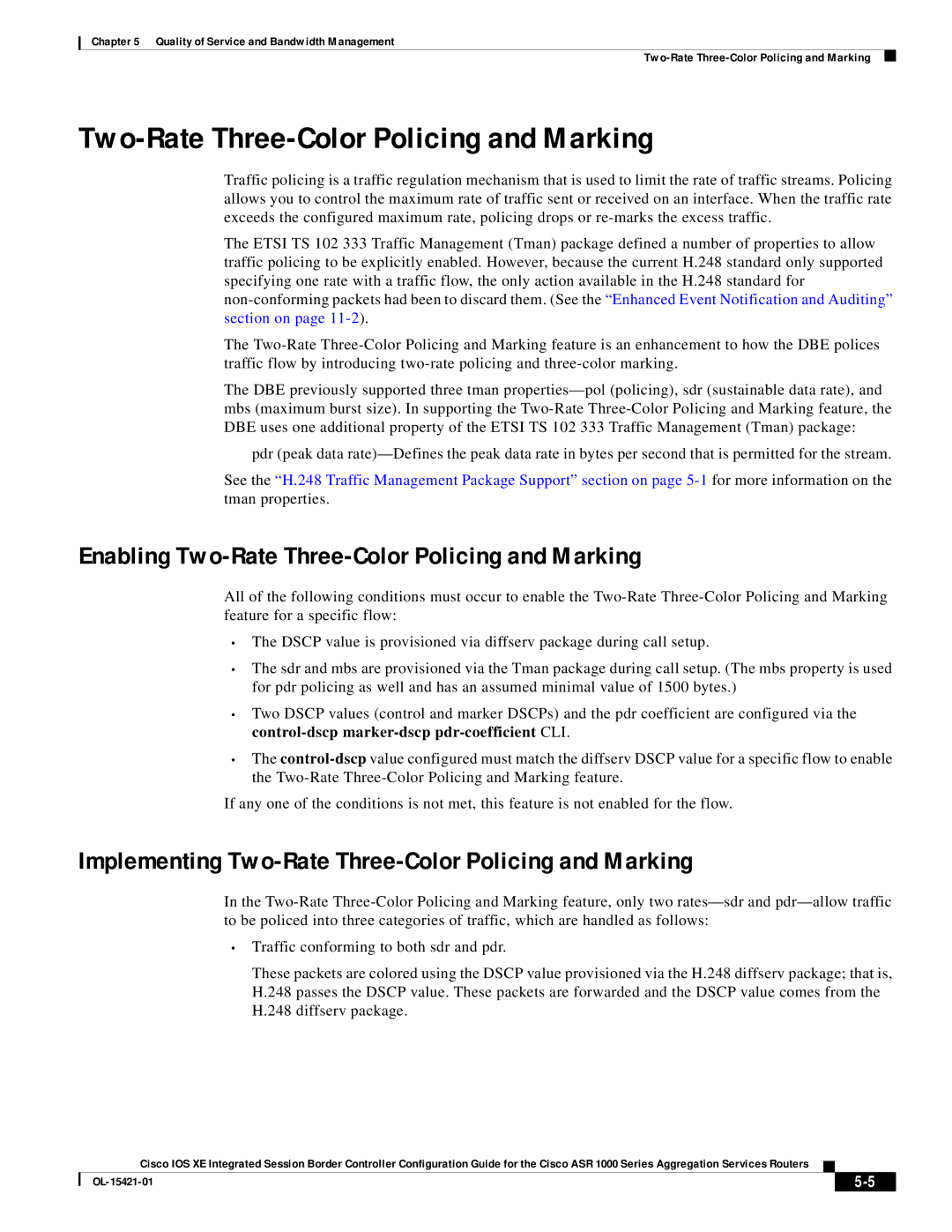
Chapter 5 Quality of Service and Bandwidth Management
Two-Rate Three-Color Policing and Marking
Traffic policing is a traffic regulation mechanism that is used to limit the rate of traffic streams. Policing allows you to control the maximum rate of traffic sent or received on an interface. When the traffic rate exceeds the configured maximum rate, policing drops or
The ETSI TS 102 333 Traffic Management (Tman) package defined a number of properties to allow traffic policing to be explicitly enabled. However, because the current H.248 standard only supported specifying one rate with a traffic flow, the only action available in the H.248 standard for
The
The DBE previously supported three tman
pdr (peak data
See the “H.248 Traffic Management Package Support” section on page
Enabling Two-Rate Three-Color Policing and Marking
All of the following conditions must occur to enable the
•The DSCP value is provisioned via diffserv package during call setup.
•The sdr and mbs are provisioned via the Tman package during call setup. (The mbs property is used for pdr policing as well and has an assumed minimal value of 1500 bytes.)
•Two DSCP values (control and marker DSCPs) and the pdr coefficient are configured via the
•The
If any one of the conditions is not met, this feature is not enabled for the flow.
Implementing Two-Rate Three-Color Policing and Marking
In the
•Traffic conforming to both sdr and pdr.
These packets are colored using the DSCP value provisioned via the H.248 diffserv package; that is, H.248 passes the DSCP value. These packets are forwarded and the DSCP value comes from the H.248 diffserv package.
Cisco IOS XE Integrated Session Border Controller Configuration Guide for the Cisco ASR 1000 Series Aggregation Services Routers
|
| ||
|
|
